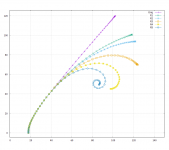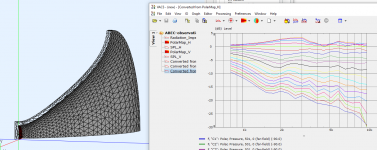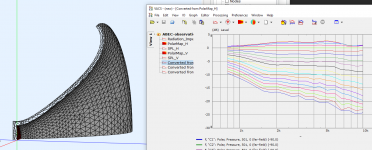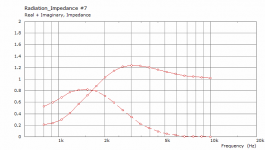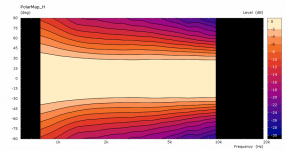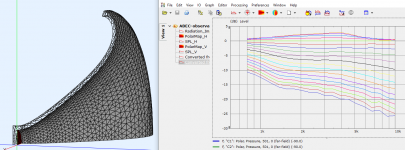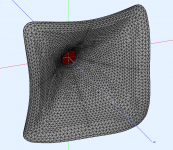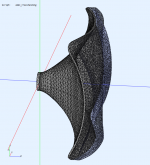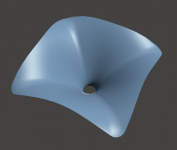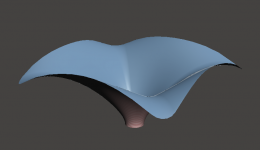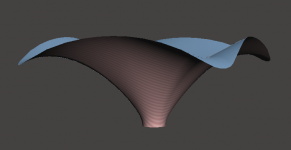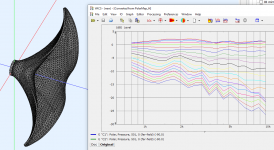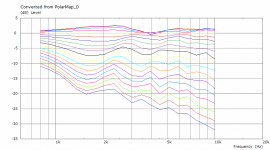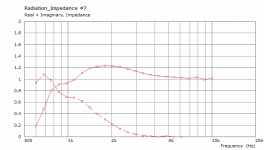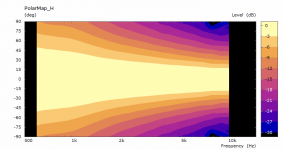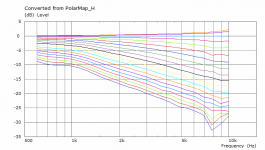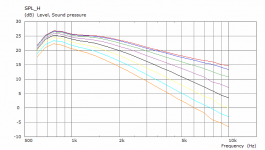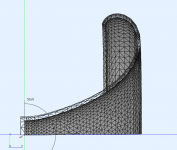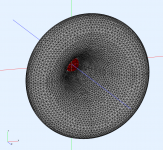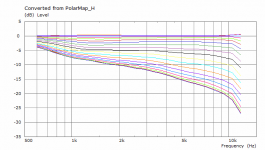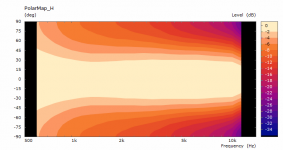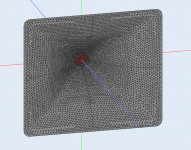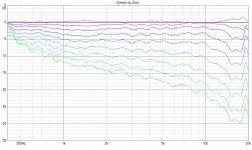I don't know what it is but it is definitely rolling back nicely.
(Different values of a parameter controlling the rollback speed.)
Probably some parametrizable bounds on the maximum rollback angle and/or the minimum radius will be handy.

(Different values of a parameter controlling the rollback speed.)
Probably some parametrizable bounds on the maximum rollback angle and/or the minimum radius will be handy.
Attachments
Last edited:
...as for the above one, probably not that good.

Attachments
Last edited:
Just a try - 1.4" throat, free standing, only ⌀280 mm:
(It's still more on the "spiral" side, I'd prefer it more on the "beamwidth control" side. Now it's possible to freely mix the two.)

(It's still more on the "spiral" side, I'd prefer it more on the "beamwidth control" side. Now it's possible to freely mix the two.)
Attachments
I'm new to all of this, and I've been trying to skim through this thread to catch up, but I feel like I'm missing something. What is the benefit of the "spiral" or "rollback" here? Does it improve the polar response or simply limit the beamwidth? Inspiring work so far!
As I understand it, the rollback "shadows" the edge of the waveguide and lowers the intensity of a reflection and/or diffraction from this edge. As can be observed from the previous pictures, it really smoothens the frequency response. With large enough radius and the amount of rolling back, it's like the edge wasn't there at all.What is the benefit of the "spiral" or "rollback" here? Does it improve the polar response or simply limit the beamwidth?
Mabat - agreed. Edge diffraction will depend on the rate of change of the slope. The more gradual, the less diffraction. While no edge termination can reduce diffraction to zero, it can be made to be insignificant.
So, for these freestanding waveguides, this has a similar effect to the response as rounding over cabinet edges would in a traditional enclosure?
Basically, yes.
My aim now is to determine whether large waveguides benefit from this rollback as much as the smaller ones. For that I first need to implement a quick simulation of circular symmetry which is then solved in seconds or minutes, not hours, as I need to compare a bunch of larger devices.
My aim now is to determine whether large waveguides benefit from this rollback as much as the smaller ones. For that I first need to implement a quick simulation of circular symmetry which is then solved in seconds or minutes, not hours, as I need to compare a bunch of larger devices.
Every now and then, after changing the code, I try to re-generate and run through the whole process this horn just to check it still works as before. It still does 🙂
(This is in an infinite baffle.)

(This is in an infinite baffle.)
Attachments
Last edited:
I'm but it's not that hard to achieve similar performance if one spends some time with the tool. Take it as an inspiration.
Last edited:
Mabat, I haven't used this for a good while now and I see things have changed now quite a bit. Is that Gcurve angle now what I should use to define coverage angles together with Gcurve.vertscale?
- Home
- Loudspeakers
- Multi-Way
- Acoustic Horn Design – The Easy Way (Ath4)
